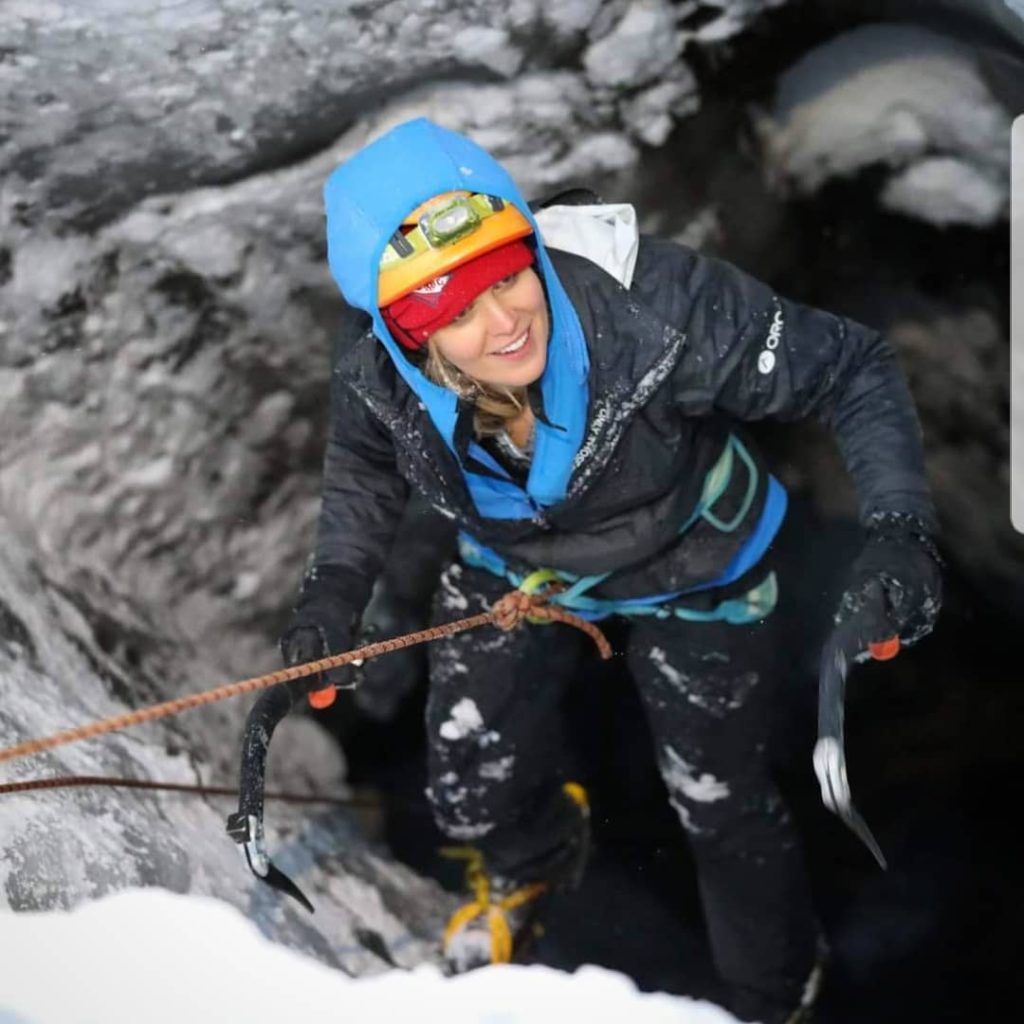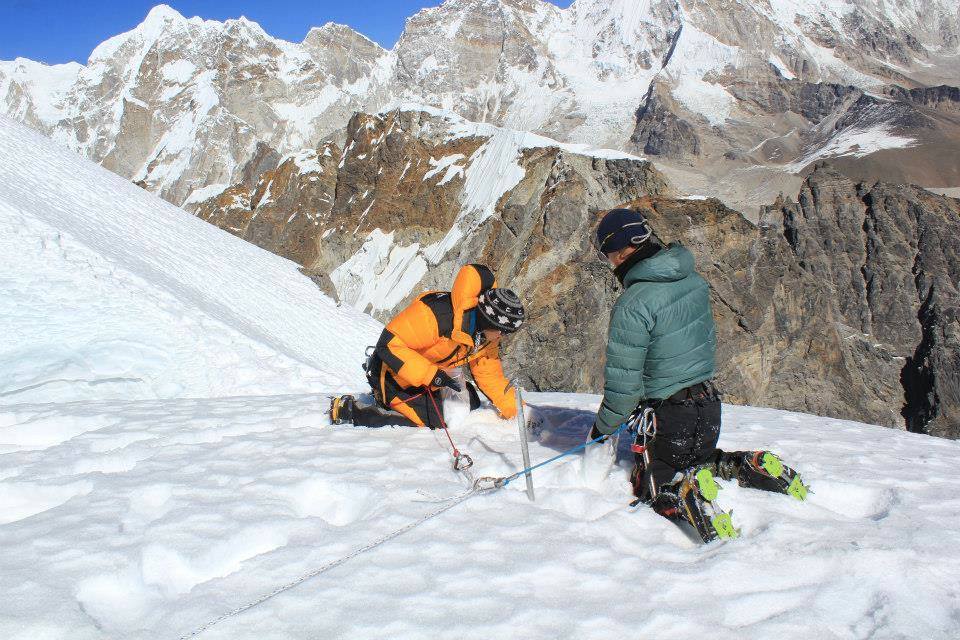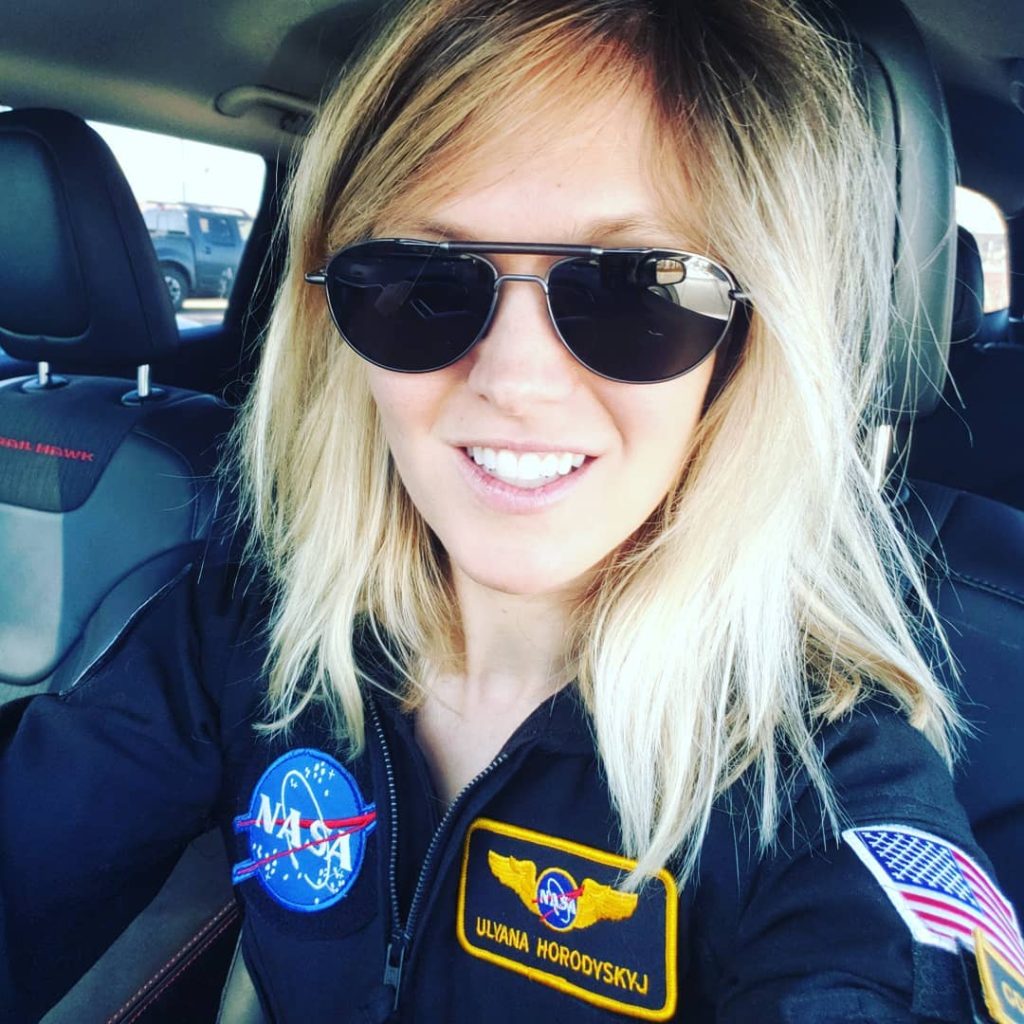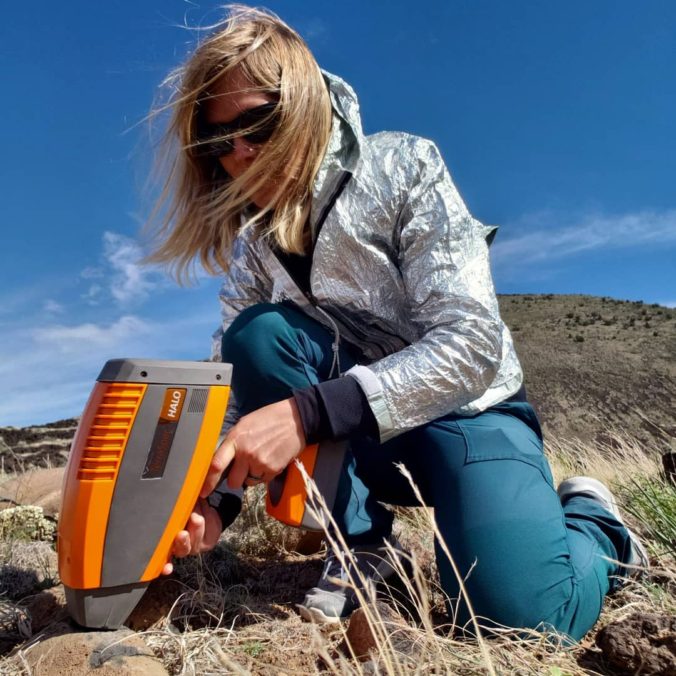She stood in front of a room at NASA’s Building the Citizen Science Community workshop and explained how she, as a scientist herself, developed a travel company that would bring people to remote locations in the world to do science in the wild. Her initiative, Science in the Wild, hits the nail on the head when it comes to immersive science trips and learning through experience. Think Earthwatch. Think Adventure Scientists. A different way to travel and contribute through “Voluntourism”. But in this case, the person organizing and running the trips is the scientist herself – Dr. Ulyana N. Horodyskyj – and the participants are ordinary citizens, hungry for adventure and science.
Uly spent her PhD working on glacial lakes in the Himalaya. Through a Fulbright to do work in Nepal, her science expeditions at 15,000ft required Sherpas to transport the equipment and assist in research. Out of that work grew The Sherpa-Scientist Initiative (SSI) where sherpas learn to install time-lapse cameras, build high-altitude weather stations, and collect depth data on lakes and snow samples from local villages.
Her desire to get people involved in science didn’t stop there and upon completion of her PhD from the University of Colorado in 2015, she launched Science in the Wild.
I was excited to get a chance to talk with Uly and asked if she’d be willing to share more about her career journey and how she got to where she is today (as a professor, an explorer, and a certified badass). She’s an inspiration to me and I hope her adventurous spirit and passion for science infects you as well.

What is your earliest memory of being hooked by science?
At the early age of six, my parents, two older brothers and I spent a month in Europe. Beyond being a fun family vacation, my parents packed in a lot of educational experiences for us. This included going up to 10,000 feet in the Swiss Alps, seeing beautiful mountains, and exploring an “ice palace” carved inside a glacier. I was definitely hooked on learning and on science!
What/Who inspired you to become a scientist?
My first mentor, Dr. Robert L. Forward. I was 13 years old, wanting to do a science fair project on solar sails (traveling in space without rockets). He took me under his wing, teaching me and even giving up his spot at a conference at the Jet Propulsion Laboratory in California so that I could present my project to a room full of rocket scientists (page 2: https://www.jpl.nasa.gov/universe/archive/un0006.pdf).
Throughout my teens, I participated in science fairs and symposia, earning me enough scholarship money to attend college. Beyond competition, doing the science fair projects on a low-budget really taught me how to MacGyver solutions, deal with failure, and experience the joy of discovery.
What did you study during undergrad? Did you always know what you wanted to study before beginning?
I knew that I wanted to do science and had a particular interest in astronomy. I went to Rice University in Houston, Texas for college, where I started as an astronomy major and even worked two years in an observatory. But when I took a geology class near the end of my freshman year, I felt that it aligned more with my interest in the outdoors. Being a geology major meant that I could do both science and have adventures outdoors!
Why did you go to graduate school?
Excellent question, as going to grad school is a huge commitment of time, money and energy! I had a dream to start up an adventure science school and wanted to feel qualified to do so – to be an expert in my field. Diving in deep with a PhD gave me focus, drive and humility. To be a good leader on outdoor expeditions that I currently lead with Science in the Wild, all of those skills are crucial, too.

What was your first science-related job and how did you find it?
I worked for the Rice Space Institute (RSI) in an office job my first year of college. It was offered to me by Ms. Umbe Cantu, Department Operations Administrator of RSI. I had met her a year prior, at age 16, while on a college visit at Rice when I was deciding between schools. Her personality, energy and enthusiasm for Rice University was contagious and so I signed my acceptance letter! I got a lot of experience with computer work (and got good at Googling information!) for creating educational content about earth and space science. In addition to office work, I visited and volunteered at museums and planetariums, which was my early intro to science education and communication for the public.
Has your work allowed you to travel (where have you gone)? (Check out all her travel here and there)
Yes, by the time I turned 23 (I’m 33 now), I had traveled to and/or worked on all the continents. Antarctica was a surreal experience – working on the back deck of a research icebreaker ship, helping out science projects. New discoveries were made just about every day!
When did you get into outdoor climbing/mountaineering and did you know it would benefit your science career?
I was always active as a kid. In high school, I ran track and played soccer. But it wasn’t until the end of college that I climbed for the first time – in a gym. When I moved to Rhode Island (Brown University) for my Masters, I had a lot of climbing mentors and so was able to develop my skills not only in the gym, but also outdoors and in the Appalachian mountains. I realized that I really loved both climbing and science. But how to blend them? I left with my Masters and headed west to Colorado, to start graduate work (for a PhD) doing something I was really passionate about – working in the mountains of Nepal.

What was the inspiration and motivation for starting your company Science in the Wild?
I received a Fulbright to Nepal in 2013. Living and working in the country gave me insights into living conditions the people endure, especially in the mountains (no heat in the teahouse bedrooms, for example!). Prior to that, though, I had already been working with the Sherpas since my first trip to the region in 2011. They didn’t just help me carry scientific gear; I actively involved them in my project work. Along the way, tourists in the Everest region were curious as to what I was up to, given I had an inflatable raft, ice axe and crampons…not standard hiking gear. I would give impromptu glacier talks, glacier “safaris” (in my inflatable raft, with life vests) and realized that I wanted to continue to bring people the joys and knowledge of the wild places of our planet. Hence, Science in the Wild was born.
Do you have a motto you live by?
Dreams don’t work unless you do!
What is your favorite thing/what keeps it fun for you when it gets hard?
During the year I lived abroad in Nepal, I was sometimes out alone on the trails, which gave me a lot of time to think. I found what helped me through loneliness and stress (from the field work), was listening to a lot of music on my iPod. Especially when trails got steep! It was a way to connect with nature on another level. When I listen to some of the same songs now, it transports me back there and reminds me what I endured and accomplished out in the field. It also reminds me of all the happy memories I made out there! Music is still my go-to when the going gets hard.
What has been your biggest challenges (as a scientist, or a woman in science, or an adventurous scientist, etc)?
Getting taken seriously – both as a scientist and as a mountaineer. Often times I’m mistaken for a student rather than a professor! I’m small – 5 feet, 4.5 inches. So, carrying heavy packs on mountains for science expeditions can be really challenging. I feel like I have to train much harder and work a lot harder for respect in both fields.

What do you envision for your future?
I’m very excited to continue my work in the realm of citizen science. I want to get more people outdoors through the expeditions and workshops that Science in the Wild offers, learning about beautiful landscapes around the world. For those that cannot join us in the field, I want to bring the world to them, in virtual reality. Our planet is changing – and not for the better – right before our eyes. Let’s see it, let’s talk about it, then let’s do something about it!
Continue following Uly’s science and adventures on Instagram, Facebook, and through her website.
When Uly is not galavanting around the world for work or fun, she spends her time as a visiting professor at Colorado College in Colorado. She also works with her husband to bring music to people in the mountains through Summit Songs and Science. She’s always doing something exciting! And just so you didn’t miss it, she also experienced a 30-day isolation and stress experiment as commander for NASA HERA XII (human exploration research analog) for future long-duration space missions.

Hope you enjoyed this interview with Dr. Ulyana N. Horodyskyj!
If you like the blogs you see here and reading more about women doing science that gets them out in the field, subscribe to receive posts as they happen! Thanks for reading!
Share this:





































